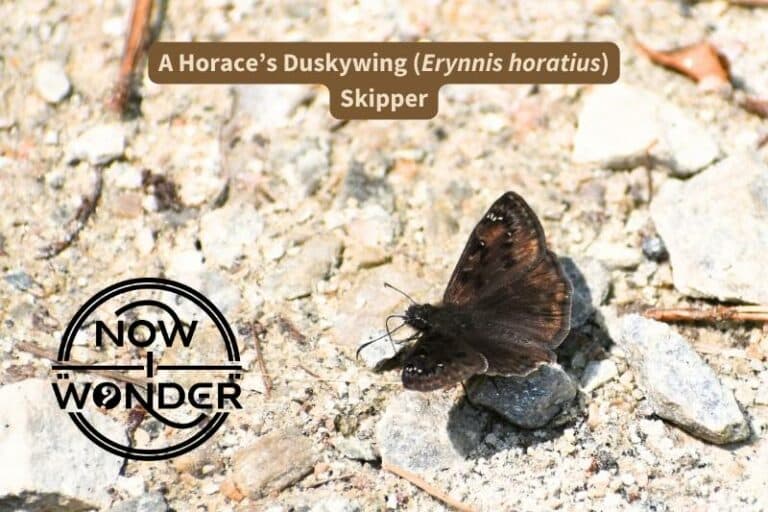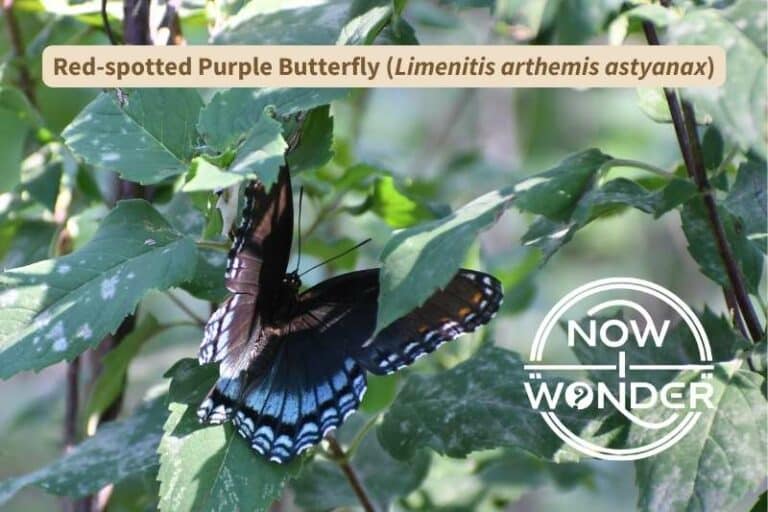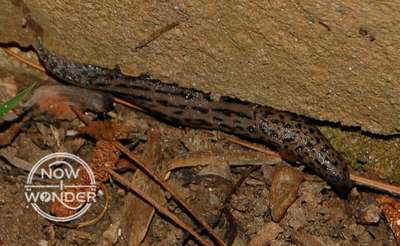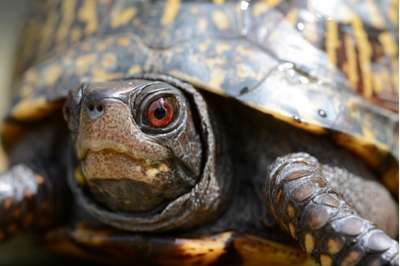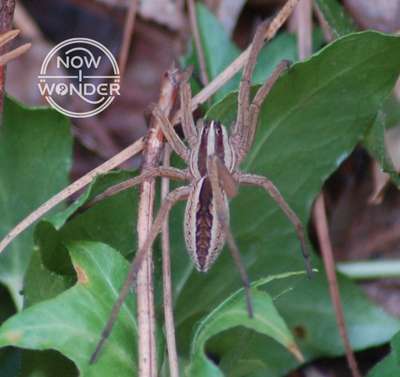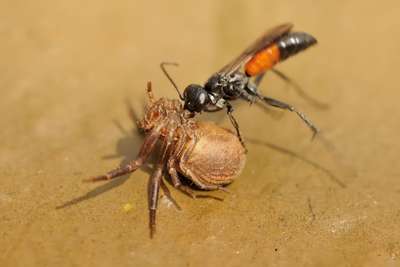Slugs and snails differ in a few key characteristics; some more obvious than others. This post will discuss the important differences between these two types of invertebrates and how they impact the daily life of these common animals.
The most important difference between land slugs and snails is that snails have visible, external shells; slug shells are small, vestigial, and lay underneath their skin. Made from calcium carbonate, snail shells are hard, asymmetric, spiral structures that house and protect the snails’ bodies.
The presence or lack of an external shell is more than just a cosmetic difference. Read on for the details of the value these protective structures provide snails and how slugs have adapted to life without them.
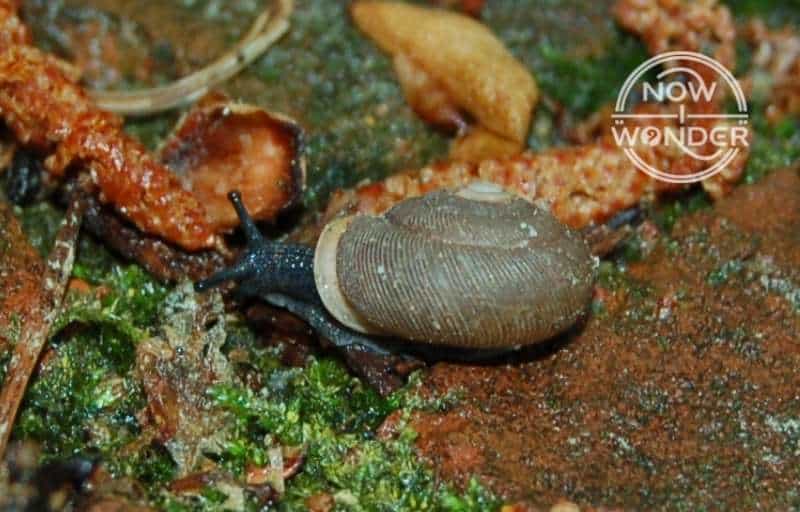
What is a snail’s shell made of?
Snail shell consists of two layers of calcium carbonate. A snail absorbs calcium from its food and environment and a special structure called the “mantle” secretes a chalky fluid that hardens into the shell. The inner layer is white and often iridescent; the outer layer can be a variety of colors.
A snail’s shell sits on the outside of its body, on top of its back, and is created by the mantle. Both slugs and snails have mantles, which perform two functions for these animals; respiration and shell creation. The mantle acts as a lung but – more importantly when discussing the differences between slugs and snails – it secretes the material that forms the gastropod shell.
The mantle is located behind the animal’s head and takes up approximately one third of the total body length on average. In slugs, the mantle is slightly humped with a defined edge and is often colored or marked differently from the rest of the slug’s body. In snails, the mantle is hidden beneath the external shell.
Different portions of the mantle contribute to the building of the shell. The cells located at the edges or margins of the mantle secrete the substance that becomes the dense, colored outer shell layer. The inner shell layer is built by material secreted by the surface of the mantle (Lagasse 2018).
Snails are born with tiny, fragile shells that harden over time. As they age and their bodies get larger, their mantles secrete additional calcium carbonate so that their shells enlarge as well.
Snail shells grow from the margin where the snail’s body emerges; the new shell material presses the existing shell up and back, forming it into a whorled pattern.
The value of a snail’s shell
Snail shells are important for more than simply species identification and provide snails with benefits that slugs can’t share because their shells are internal.
Houses part of the snail’s body
Both snails and slugs have unsegmented bodies; the external, visible portion of a gastropod’s body is one big body part called the “cephalopodium”, or “head-foot” (Nordsieck 2022).
A gastropod’s head is the end with which it leads when moving and which holds the two pair of sensory tentacles. The foot is the elongated under-surface of the gastropod’s body that allows it to move across land. But in reality, these body parts blend seamlessly into each other with no divisions between them.
The internal part of a gastropod’s body is also undifferentiated and is referred to as a “visceral mass” or “visceral sac” (Nordsieck 2022). A slug’s visceral mass is part of the long cephalopodium, which is always visible because of the lack of an external shell. But in snails, the visceral mass is contained within the external shell and is not visible.
Snail shells get larger and taller as a snail ages, as does its internal visceral mass. As the snail forms new shell at the boundary of the opening, the shell coils into its characteristic whorled shape. The shells of some snail species coil to the left, which is known as “sinistral”, while other species coil to the right, which is called “dextral”.
A snail’s shell is also asymmetrical, as is the underlying visceral mass. The right and left sides of a snail shell look different as shown in the following images.
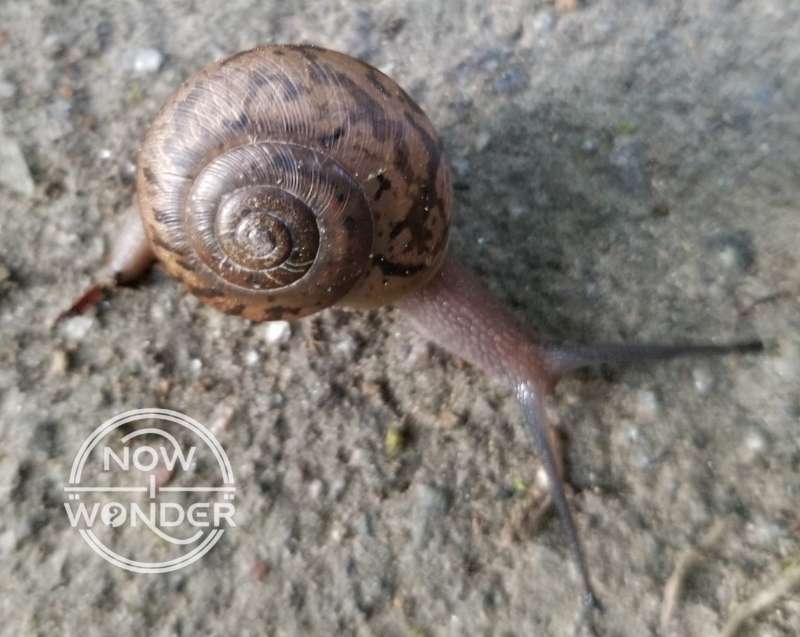
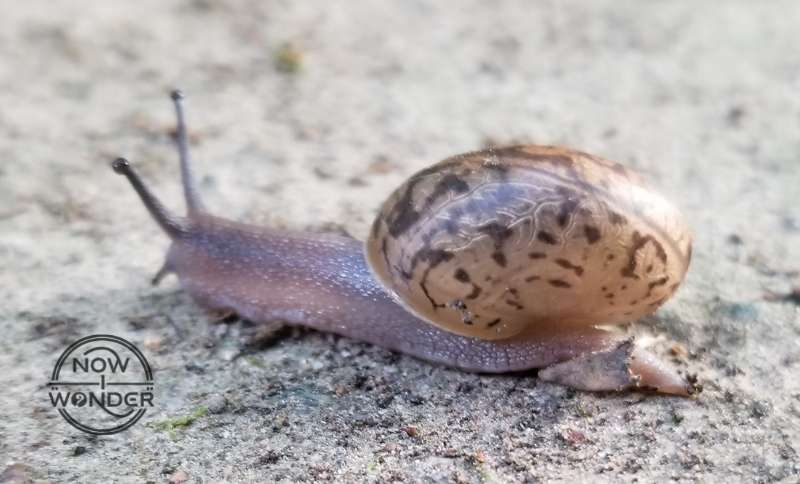
A snail’s body is entirely connected to the inside of its shell and the animal will die if it is pulled apart from its shell. They do not shed their shells the way other animals, such as hermit crabs, do. An empty snail shell means the inhabitant died and was either eaten or rotted away.
Slight protection from predators
Many predators prey on terrestrial snails and slugs, which are vulnerable due to their slow speed and soft bodies. For such an ancient and successful group of organisms, gastropods are surprisingly incapable of defending themselves against attack. Neither has fangs, stingers, venom, poison, or the ability to run or fly from an attacker.
Both gastropods are active at night when they are harder to spot and hide during the day to avoid being eaten. Some species can produce special defensive slime when threatened that deters predators. A slug’s defenses stop there; snails have a slight advantage because of their external shells.
Snail shells are a mechanical barrier to predation; they provide a sort of armor for the snail’s soft body. Also, the rounded shape can make a snail challenging to grip and the size can deter a predator from swallowing the snail whole; the predator usually must extract the animal from the shell first. Slugs, on the other hand, are easy to pluck up and swallow whole.
While a snail’s shell is mostly filled with its visceral mass, there is enough space for the external cephalopodium as well. Most terrestrial snails can pull their entire bodies into their shells in the hopes of waiting out an impatient attacker.
Snails close off the opening using a trap door structure called an operculum. The operculum is made of the same material as the shell. It rests under the base of the shell and can be difficult to see if the shell is large.
Despite the ability to barricade themselves into their protective shells, snails still fall prey to determined predators that easily overcome the defensive shell. For example, birds can peck through the operculum and pull out the snail and canids can simply crush the shells with their strong jaws.
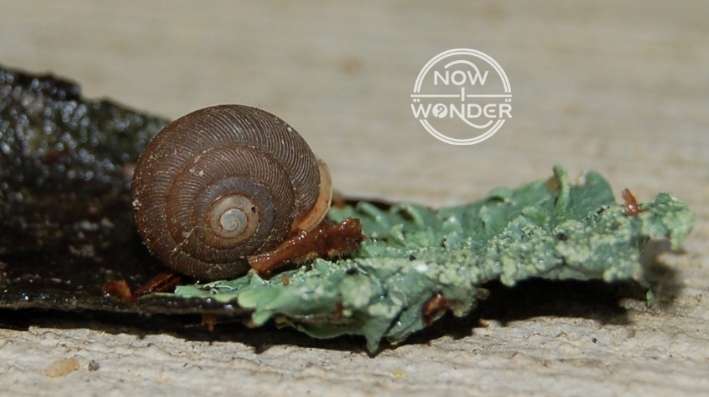
Here is a video that shows a snail on the move:
Protection from dehydration
Unlike many of their aquatic cousins within Phylum Mollusca, snails and slugs evolved to be terrestrial organisms. They share several important adaptations that allow them to live on land, but snails have a slight advantage – again, due to their external shells.
Slug and snail body tissues have high water content due to their aquatic ancestry. Both animals risk losing too much water through their skins and dying from dehydration. One of the most important adaptations to minimize dangerous water loss in both gastropods is the production of a slime coat.
Both snails and slugs produce a layer of slime that covers their entire bodies and protects the animals from dehydration. The slime is specialized mucus and is hygroscopic; the slime attracts water from the air, keeping the animal moist. Both gastropods take advantage of this property by being active at night when humidity is high and by hiding in moist areas during the day when temperatures are hotter, the air is usually drier, and the sunlight is bright.
Another advantage snails have over slugs because of their external shells is that the hard, non-living shell material is impermeable to water. The visceral mass is tucked safely behind the barrier formed by the shell and the covered area can’t lose water to the environment.
During periods of hot, dry weather, snails can retract into their shells and further conserve body water. Since slugs have no external shells into which they can retreat, their entire bodies are exposed to the air all the time, making them more vulnerable to dehydration. A slug’s only option during hot, dry weather is retreat to a moist hiding spot.
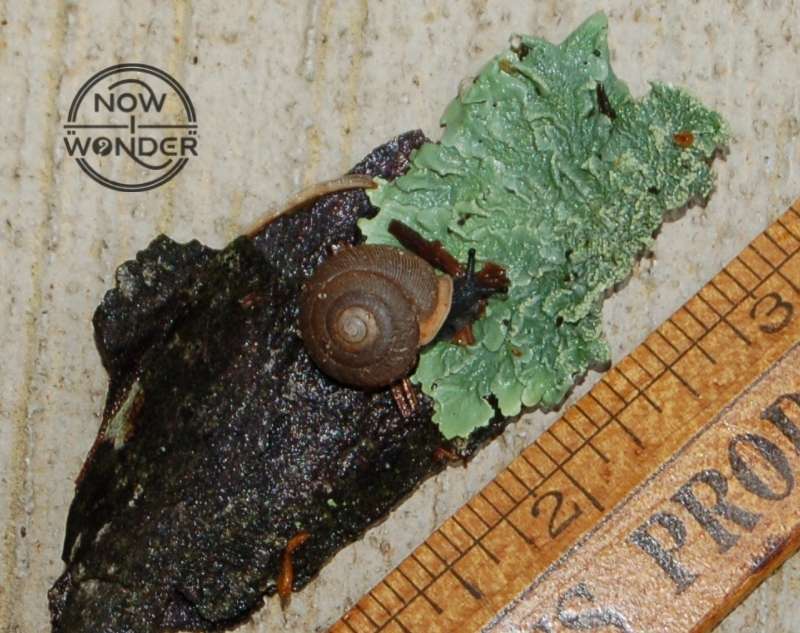
Snails are on human menus; slugs are not
A last difference between snails and slugs is related to how we humans interact with them.
Many civilizations throughout history have eaten snails, including the Babylonians, the Egyptians, and the traditional French. Two popular species of edible snail are the Roman Snail Helix pomatia, which is the traditional French delicacy escargot,and the Common Garden Snail, Helix aspera. (Hyman 2014). Several other species within Family Helicidae are also edible; however, slugs are not, at least by humans.
Class Gastropoda contains over 65,000 species, many of which are terrestrial snails and slugs (Britannica Concise Encyclopedia 2017). As might be expected for such a large group, many species are native to the United States; these tend to be lesser known because they are not major garden or agricultural pests. The most destructive snails and slugs are those non-native species introduced to the United States from their original habitats either accidentally or deliberately.
As slugs are not edible for humans, non-native species found in the United States were probably brought to the United States accidentally in plant imports. Their omnivorous diet and anatomical adaptations that allow them to thrive on land allowed them to disperse and establish themselves across wide swathes of the United States independently.
The pest species of non-native snails share the same adaptability as their introduced slug cousins but many were deliberately brought to the United States from their native habitats for food production.
According to author John L. Capinera in the excellent book “The Handbook of Vegetable Pests”, the following snail species were imported deliberately and are now destructive within the areas in which they are found:
- The Brown Garden Snail, Helix (or Cryptomphalus) aspersa Müller
- The Singing Snail, H. aperta Born
- The Roman Snail, H. pomatia Linnaeus
- The Milk Snail, Otala lactea (Müller)
- The Brown-lipped Snail, Cepaea nemoralis (Linnaeus)
- The White-lipped Snail, C. hortensis (Müller. (Capinera 2001).
Snails are sometimes referred to as “slugs with shells”; the presence of an external shell is an obvious visible difference between the two groups of terrestrial gastropods. But while a snail gains slight competitive advantage over a slug by virtue of having a shell, it loses some by virtue of being edible to humans. Neither creature is better than the other; they are both wonders of the natural world.
Related Now I Wonder Posts
If you’d like to learn about one of the most common – and dramatic-looking – slugs found in the United States, check out my post “What is the large spotted slug called?”.
For more information about what gastropods eat, check out my post “What do slugs eat?”.
If you’d like to read more about slugs – and why they are worth reading about – check out my post “What are slugs?”.
To learn about some of the reptile species that prey upon slugs and snails, check out these other Now I Wonder posts:
- What are skinks?
- Everyday lives of Five-lined Skinks
- What are the small green lizards called?
- Everyday lives of green anoles
To learn more about freshwater turtles, check out these other Now I Wonder posts:
- Eastern Box Turtle FAQs
- Are Eastern Box Turtles rare?
- Can you find turtles in rivers?
- River Cooter Turtles: Almost a research enigma
References
Capinera, John L. “Snails.” In Handbook of Vegetable Pests, Elsevier Science & Technology, 2001.
“gastropod.” In Britannica Concise Encyclopedia, by Encyclopaedia Britannica. Britannica Digital Learning, 2017.
“gastropod.” In The Macmillan Encyclopedia. 2nd ed. Market House Books Ltd, 2003.
Hyman, Philip and Mary Hyman. “Snails.” In The Oxford Companion to Food, edited by Tom Jaine. 3rd ed. Oxford University Press, Inc., 2014.
Lagasse, Paul, “Mollusca.” The Columbia Encyclopedia, Columbia University. 8th ed. Columbia University Press, 2018.
Nordsieck, Robert. “Snails (Gastropoda): Body construction.” Living World of Molluscs. 2022. http://www.molluscs.at/gastropoda/terrestrial.html?/gastropoda/terrestrial/limax.html

